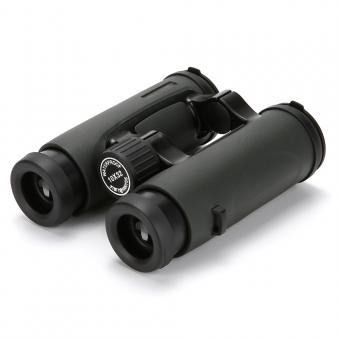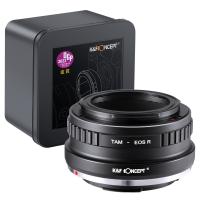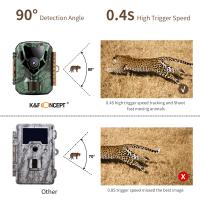What Is Depth Of Field Microscope ?
Depth of field in a microscope refers to the range of distance that appears to be in focus at a given time. It is the distance between the nearest and farthest objects in a specimen that appear sharp and clear in an image. The depth of field is influenced by several factors, including the numerical aperture of the objective lens, the magnification, and the wavelength of light used. A microscope with a larger numerical aperture and higher magnification will have a shallower depth of field, while a microscope with a smaller numerical aperture and lower magnification will have a deeper depth of field. The depth of field can be adjusted by changing the aperture size or by using techniques such as focus stacking to combine multiple images taken at different focal planes. Understanding the depth of field is important in microscopy as it affects the clarity and detail of the images obtained.
1、 Optical System
What is depth of field microscope?
Depth of field in a microscope refers to the range of distance that is in focus at any given time. It is the distance between the nearest and farthest objects in a scene that appear acceptably sharp in an image. The depth of field is determined by several factors, including the numerical aperture of the objective lens, the wavelength of light used, and the refractive index of the medium between the objective lens and the specimen.
In a microscope, the depth of field is an important consideration when imaging specimens with three-dimensional structures. A shallow depth of field can make it difficult to capture all the details of a specimen, while a deep depth of field can result in a loss of contrast and resolution.
Optical System:
The optical system of a microscope plays a crucial role in determining the depth of field. The numerical aperture of the objective lens is a key factor in determining the depth of field, as it determines the angle of light that enters the lens. A higher numerical aperture results in a shallower depth of field, while a lower numerical aperture results in a deeper depth of field.
Recent advances in microscopy have led to the development of new techniques for improving the depth of field. One such technique is called computational microscopy, which uses algorithms to reconstruct images with a greater depth of field than would be possible with traditional microscopy techniques. Another technique is called light-sheet microscopy, which uses a thin sheet of light to illuminate a specimen from the side, resulting in a deeper depth of field and reduced phototoxicity.

2、 Numerical Aperture
"Numerical Aperture" is a term used to describe the ability of a microscope lens to gather and focus light. It is a measure of the lens' ability to resolve fine details in a specimen, and is determined by the refractive index of the medium between the lens and the specimen, as well as the angle of the cone of light entering the lens. A higher numerical aperture means that the lens can resolve finer details and produce a sharper image.
Depth of field in microscopy refers to the range of distances in a specimen that are in focus at the same time. It is determined by the numerical aperture of the lens, as well as the wavelength of light used and the refractive index of the medium. A higher numerical aperture will result in a shallower depth of field, meaning that only a small portion of the specimen will be in focus at any given time.
Recent advances in microscopy technology have allowed for the development of techniques such as confocal microscopy and super-resolution microscopy, which can overcome some of the limitations of traditional microscopy. These techniques use specialized lenses and imaging systems to produce images with higher resolution and greater depth of field, allowing for more detailed analysis of biological specimens.

3、 Magnification
What is depth of field microscope?
Depth of field in a microscope refers to the thickness of the specimen that is in focus at any given time. It is the distance between the nearest and farthest objects in a scene that appear acceptably sharp in an image. The depth of field is determined by several factors, including the numerical aperture of the objective lens, the wavelength of light used, and the refractive index of the medium between the objective lens and the specimen.
In a microscope, the depth of field is inversely proportional to the magnification. As the magnification increases, the depth of field decreases, making it more difficult to keep the entire specimen in focus. This is why microscopists often use techniques such as focus stacking to create images with a greater depth of field.
The depth of field is an important consideration in microscopy, as it can affect the quality and clarity of the images produced. Microscopists must carefully balance the magnification and depth of field to achieve the best possible results.
Recent advances in microscopy technology, such as confocal microscopy and super-resolution microscopy, have allowed researchers to overcome some of the limitations of traditional microscopy techniques. These techniques offer improved resolution and depth of field, allowing researchers to study biological structures and processes in greater detail than ever before.

4、 Focal Length
What is depth of field microscope?
Depth of field in a microscope refers to the range of distance that is in focus at any given time. It is the distance between the nearest and farthest objects in a scene that appear acceptably sharp in an image. The depth of field is determined by several factors, including the numerical aperture of the objective lens, the wavelength of light used, and the refractive index of the medium between the objective lens and the specimen.
In a microscope, the depth of field is inversely proportional to the magnification. As the magnification increases, the depth of field decreases, making it more difficult to keep all parts of the specimen in focus at the same time. This is why microscopists often use techniques such as focus stacking to combine multiple images taken at different focal planes to create a single image with a greater depth of field.
Focal Length:
Focal length is another important factor that affects the depth of field in a microscope. The focal length is the distance between the lens and the image sensor or film when the lens is focused at infinity. A shorter focal length lens will have a greater depth of field than a longer focal length lens, all other factors being equal.
In recent years, advances in technology have led to the development of new microscopy techniques that can overcome some of the limitations of traditional microscopes. For example, super-resolution microscopy techniques such as STED and PALM can achieve resolutions beyond the diffraction limit of light, allowing researchers to study biological structures at the nanoscale level. These techniques also have the potential to improve the depth of field in microscopy, making it easier to image complex biological structures in three dimensions.







































